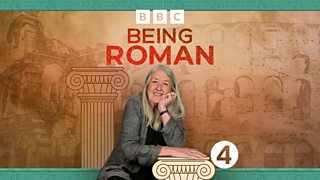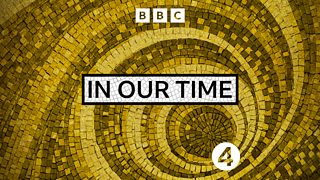7 things we found out about Ancient Rome's bar scene
In A Bag of Snails and a Glass of Wine, from Radio 4's Being Roman, Mary Beard unearths some fascinating vignettes about the relationship between the Romans and food.
Her journey starts with two publicans, Calidius Eroticus and Fannia Voluptas, aka “Mr Hot Sex” and “Mrs Gorgeous”. These “Carry On”-like characters – very likely pseudonyms for the real landlord and landlady, of course – represent a window into the lively bar culture of Ancient Rome, one that many ordinary Romans were reliant upon.
Here are 7 things we found out about the Roman bar scene.
Being Roman with Mary Beard
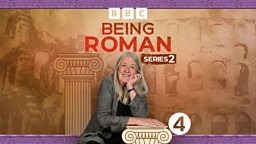
Beneath the starched togas and the pungent fug of gladiator sweat there are real Romans waiting to be discovered. Mary Beard uncovers fascinating untold stories from the Empire. Listen to the full programme.
Most urban Romans ate out
It might sound glamorous but eating out was actually a necessity for many ordinary Romans because they usually didn’t have the facilities to prepare and cook food or were too busy to make meals at home. New discoveries in Pompeii show that they had a wide range of choices – from takeaway food from bar counters facing on to the street, to private dining rooms mimicking the lifestyles of the rich and famous.
They usually didnβt have the facilities to prepare and cook food or were too busy to make meals at home.
The rich ate in!
The rich and the famous, meanwhile, ate in! Even if restaurants mimicked the reclined posture that the Roman elite would adopt to eat, the elite themselves – despite rumours of Emperor Claudius frequenting bars in Rome in his youth and Nero sneaking out of his palace to visit them – regarded eating out as low class.
Allison Emmerson of the American Academy in Rome says that those Romans making a night of it and going out to eat were really doing what some of us do today. “If we go to a very fancy restaurant,” she says, “we're dining like the British upper classes of the 19th century, where people are serving us, and serving us multiple courses.”
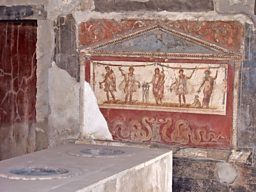
Roman bar culture was βgreasy, dark and gloomyβ
Because of the class divide, our concept of Roman bar culture is skewed, as the historical accounts were mostly written by members of the elite. Claire Holleran, professor of Classics and Ancient History at Exeter University cites writers such as Horace, Juvenal and Martial giving the impression of Roman bars as “greasy, dark and gloomy” and also as “hot, dirty places”.
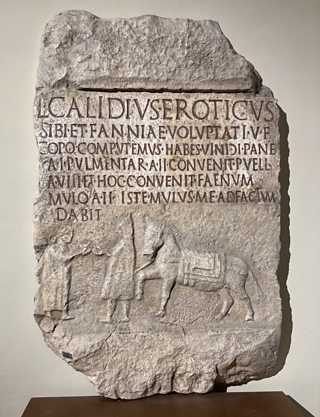
Claire adds that the archaeological evidence suggests there is truth in some of these assessments; however, because a lot of the food cooked in the bars was greasy (and smoky, when cooked), pork products such as sausages, meatballs, ham and tripe were common. The physician and philosopher Galen even suggested some innkeepers served human flesh because it was so similar to pork!
The bars would not pass a hygiene test today
While there was plenty of repeat custom, the bars were sometimes rudimentary in their operation. It wasn’t uncommon for the kitchens to be next to the latrines for ease of waste disposal.
Meanwhile, some of the bar food – such as snails, fish, broad beans and, yes, pork – was served in unglazed terracotta pots and certainly had the potential to be unhygienic!
They served a wide range of foods
Analysis of fecal remains reveals that other foodstuffs served in Roman bars include nuts, fruit and mutton. “A complete diet,” as Allison describes it.
The bars certainly had access to a lot of fresh products, with local bakeries and wineries being used. For some items, bars would go the extra mile – for example to import peppercorns, a sign that, as Allison says, “people cared about the flavour.”
They were boisterous places
As the publican couple named Calidius Eroticus and Fannia Voluptas suggest, bars could be boisterous places, and somewhat bawdy too.
Calidius and Fannia are immortalised on a “tombstone” or possible pub advert that jokes about services offered in their bar in Isernia including prostitution. Meanwhile in Pompeii, where remains give us the best idea of what the bars looked like, there are frescoes depicting various scenes including patrons playing board games, accusing each other of cheating and another age-old one of a barman telling two men that if they want to fight they can go outside!
They probably offered sex workers
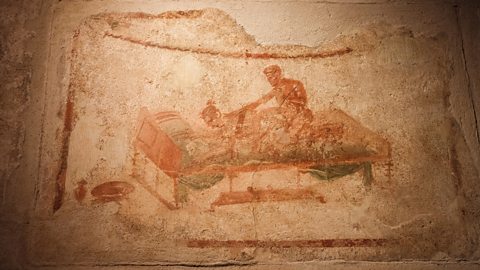
Did Calidius and Fannia's tavern offer "extras"?
Sex workers may, or may not, have been on the menu at the bar...
The stone tablet for Calidius and Fannia’s tavern depicts a traveller settling up his bill and being told that the wine, bread and relish he has consumed costs a few pence, “then there’s the girl, she costs eight pence. Oh, and then there's hay for the mule that cost tuppence.” Then the customer says, “that damn mule, you’ll be the ruin of me!”
The comic scene suggests a link between hostelries and prostitution, one that Allison believes is possible although she warns that “it's all linked together under that category of things that low status people do, and so that should make us at least a little bit suspicious.”
Listen to A Bag of Snails and a Glass of Wine: Mary Beard joins Calidius Eroticus and Fannia Voluptas for a Roman bar crawl.

Ancient History on Radio 4
-
![]()
Being Roman with Mary Beard
To know what it was to be Roman you need to gather the scattered clues until they form a living, breathing human, witness to the highs and horrors of Europeβs greatest empire. Listen and download all the episodes.
-
![]()
In Our Time: Ancient Rome
Browse the Ancient Rome era within the In Our Time archive.
-
![]()
You're Dead to Me: Ancient Greek & Roman Medicine
Greg Jenner is joined by historian Dr Kristi Upson-Saia and comedian Stu Goldsmith to explore the strange world of Ancient Greek and Roman medicine.
-
![]()
Natalie Haynes Stands Up for the Classics
Natalie Haynes takes a fresh look at the ancient world, creating stand-up routines about figures from ancient Greece and Rome. Listen and download.
